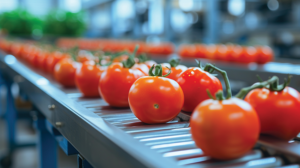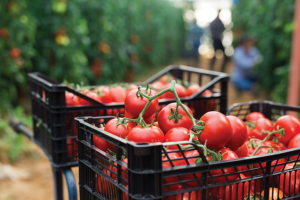Mapping the flow of produce can help assess postharvest safety risks
All food contact surfaces of equipment and tools used with covered produce — defined by the Produce Safety Rule as fruit and vegetables typically consumed raw — must be inspected, maintained and cleaned as reasonably necessary, and sanitized when appropriate and necessary.
That’s the Food Safety Modernization Act (FSMA) requirement, and its big impact is on postharvest handling and sanitation.
Tracking the flow of produce from the field through the packing area is the start of a food safety risk assessment.
“Map the flow of produce through your facility,” said Allissa Conley, produce safety technician with Michigan’s produce safety technician program, who is based at the Newaygo Conservation District in Fremont, Michigan. That includes mapping the flow through storage and loading for shipment and identifying the produce safety risks associated with each step.
“Basic housekeeping is the first step,” Conley said. This includes sweeping, emptying trash and cull piles daily, cleaning up spills and maintaining pest control programs. Contamination is easier to control in closed packing areas, but facilities may have less flexibility to adopt changes.

ATTENTION TO DETAIL
“It’s hard to come up with a generalization on the areas of most risk for all situations,” said Micah Hutchison, Michigan produce safety technician based at the Genesee Conservation District in Flint, Michigan. “Risk assessment is going through the facility, identifying the risks and developing a plan to mitigate those risks.”
Hutchison said worker training and hygienic design are big parts of creating a culture of food safety. That process starts with buying decisions. Select materials that are easy to clean and sanitize when building a new packinghouse or buying new equipment or harvest containers.
Food contact surfaces should be made of nontoxic, nonabsorbent, durable materials that are compatible with the crop and cleaning method. For example, plastic is smooth, water-resistant and easy to clean compared to carpeting. Materials that react with water or sanitizers can erode or rust, creating harboring places for pathogens.
Design and install equipment to facilitate cleaning and sanitizing. Areas needing cleaning and sanitizing should be easily accessible or easily taken apart. Brushes, rollers, nozzles and other parts should be easy to remove or access.
Some parts of the packing and storage area may already be constructed of materials that are hard to clean and sanitize. Wooden bins, for example, have a porous surface. One strategy may be to clean wooden surfaces more often and let them air dry after washing.
Dirt and moisture can accumulate in gaps, cracks, porous materials and hollow spaces, making them ideal places for pathogens to grow. Continuous welds that are rounded and smoothed are preferred.
Mitigation is about risk reduction, not risk elimination. Hygienic design upgrades don’t have to be complicated.
“Making incremental changes can help a lot,” Hutchison said. “Try to see the value in the upgrades. Upgrades are an investment in produce safety.”
FROM FARM TO FACILITY
Farm food safety plans are not required by FSMA’s Produce Safety Rule, said Morgan Anderson, produce safety technician with the Ottawa Conservation District in Grand Haven, Michigan. But farm food safety plans have been identified as critical to implementing produce safety practices.
“It’s all about assessing risk,” Anderson said. “Every farm is unique, and your farm should reflect your plan.”

The first step in developing a plan is to review all operations to identify practices or conditions that could create or increase produce safety risk. Review the farm environment and adjacent land and focus on microbial, chemical and physical risks. Rank risks and prioritize which ones to address first.
Risks that could lead to contamination of the whole crop are the most serious, followed by risks that caused previous contaminations. Hiring new people, retrofitting equipment, changing suppliers or processes — anything that affects production practices — could increase risk.
Develop practices to reduce risks and write a farm food safety plan to guide implementation. Standard operating procedures (SOPs) and policies will outline what needs to be done and who will do it and build recordkeeping into the process.
“Make your plan what you’re doing, not what you want to do,” Anderson said.
Review and update your plan at least annually or whenever practices, personnel or equipment changes.
“What is your vision for your farm?” Anderson asked. “As your farm evolves, so should your plan.”







